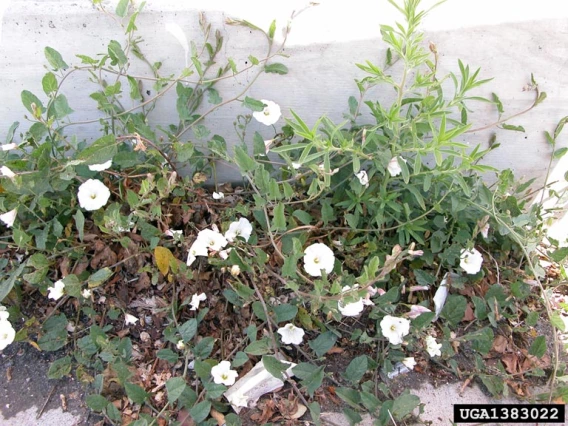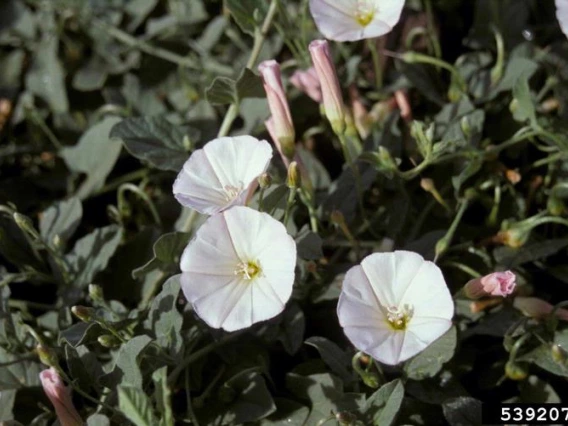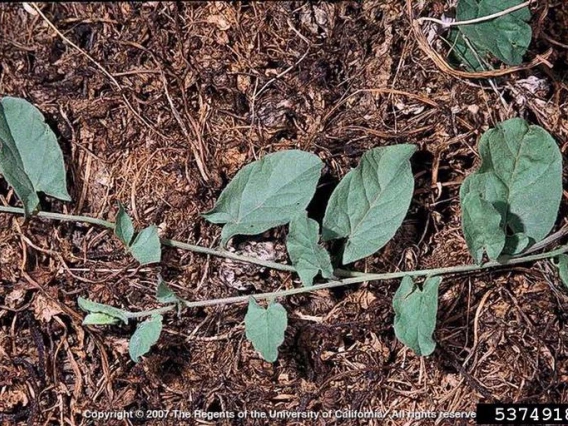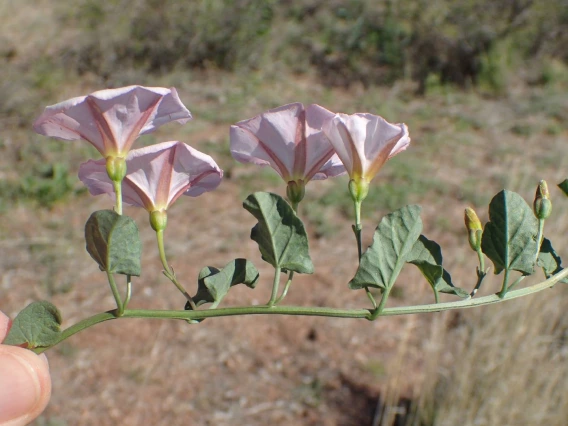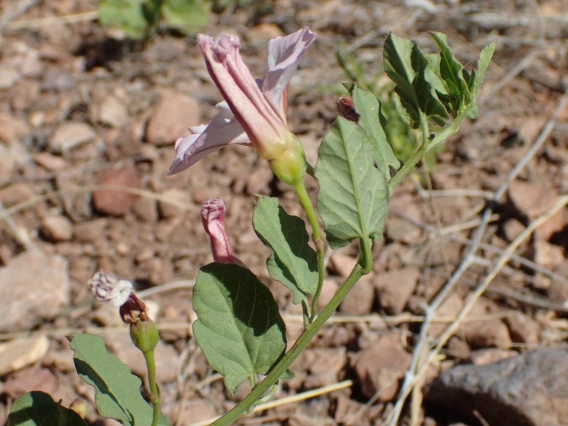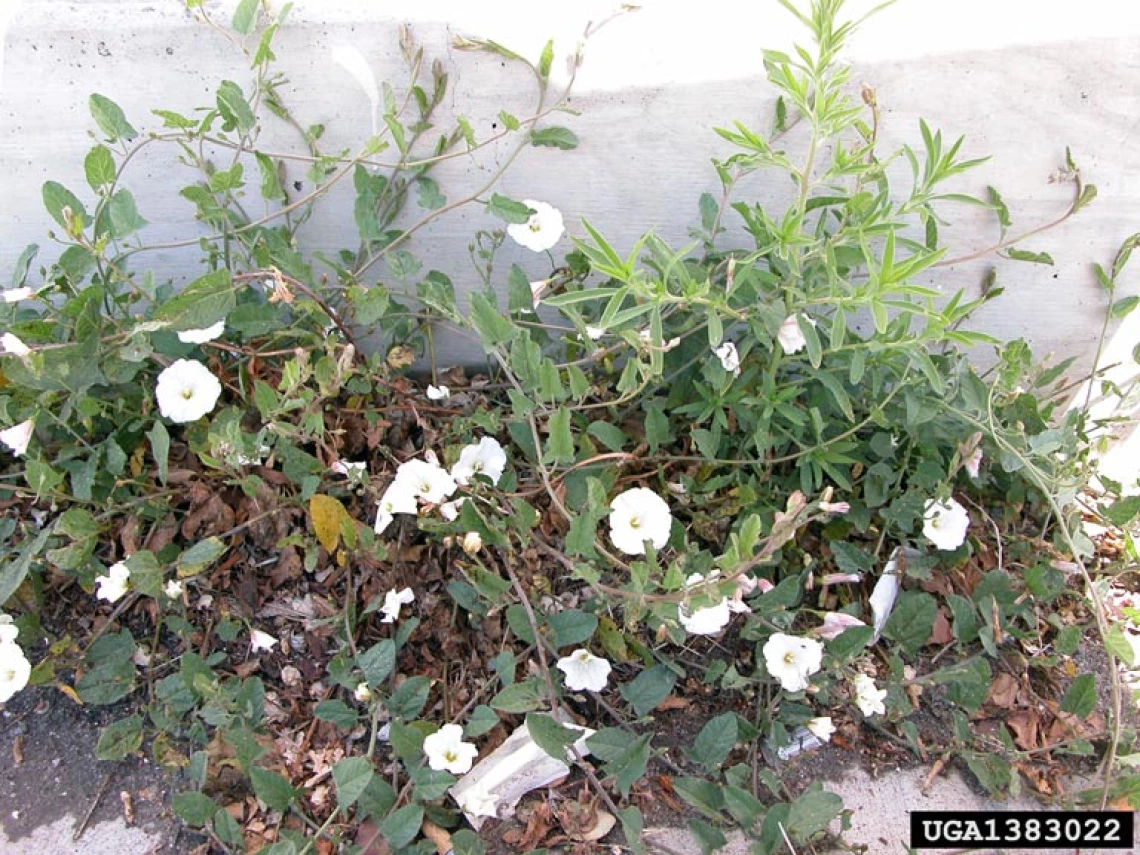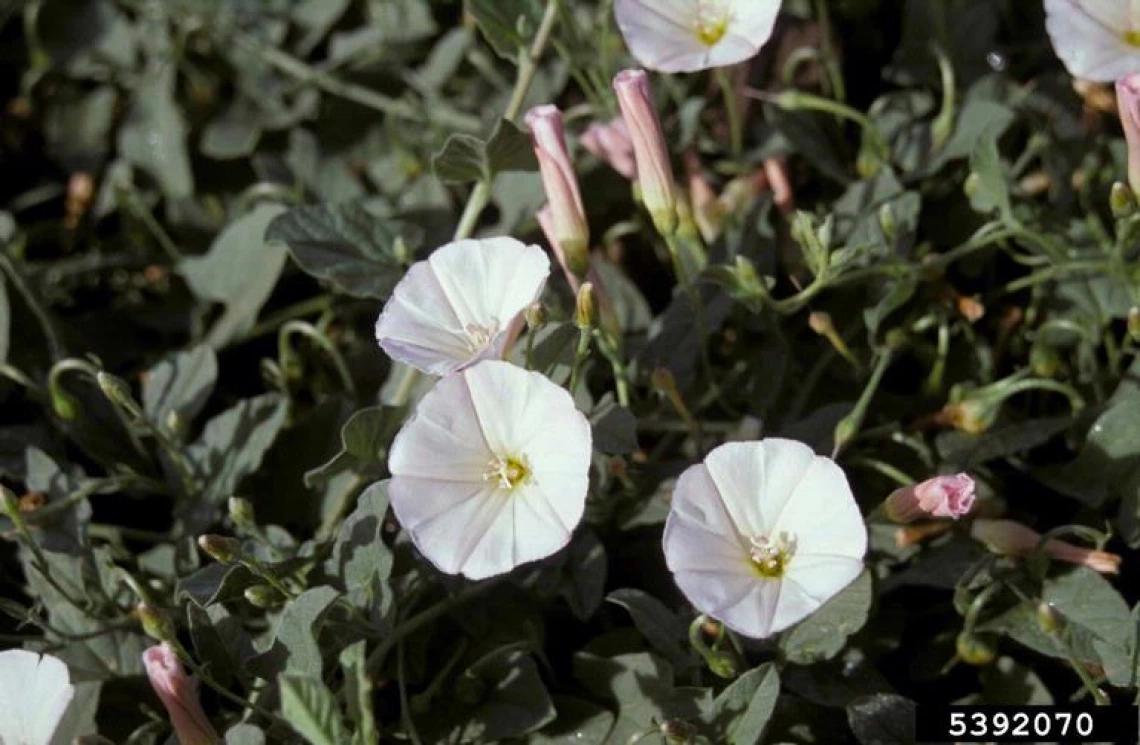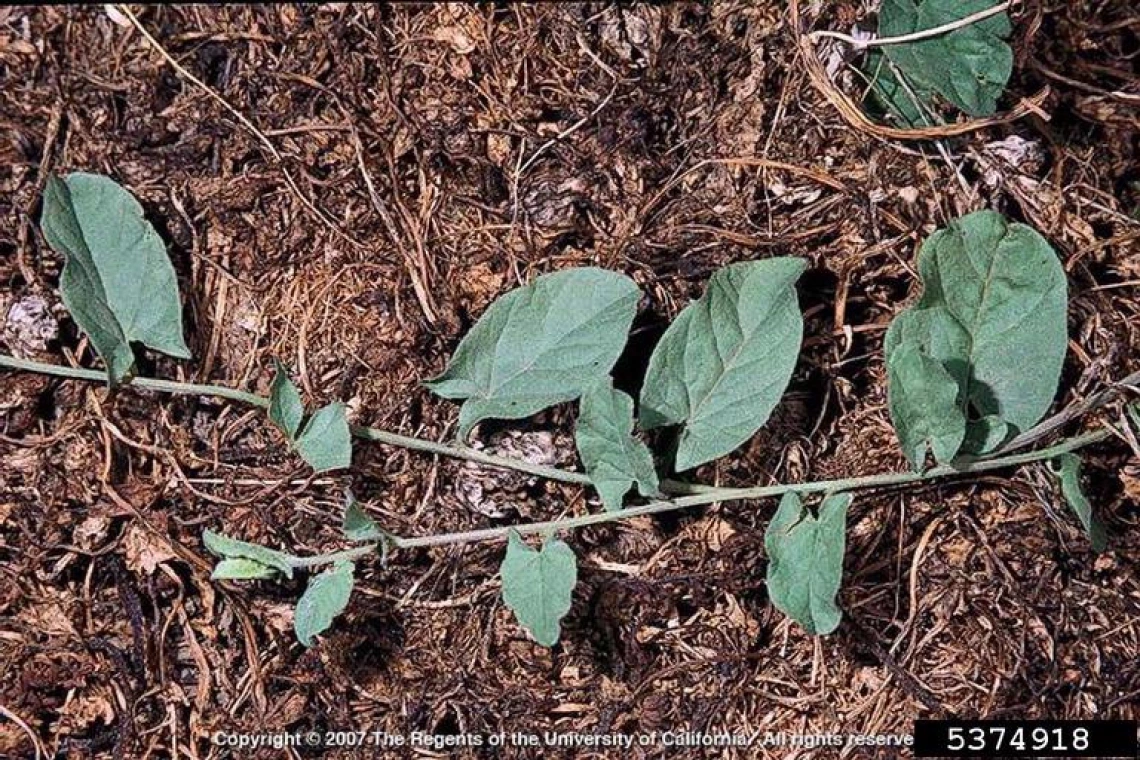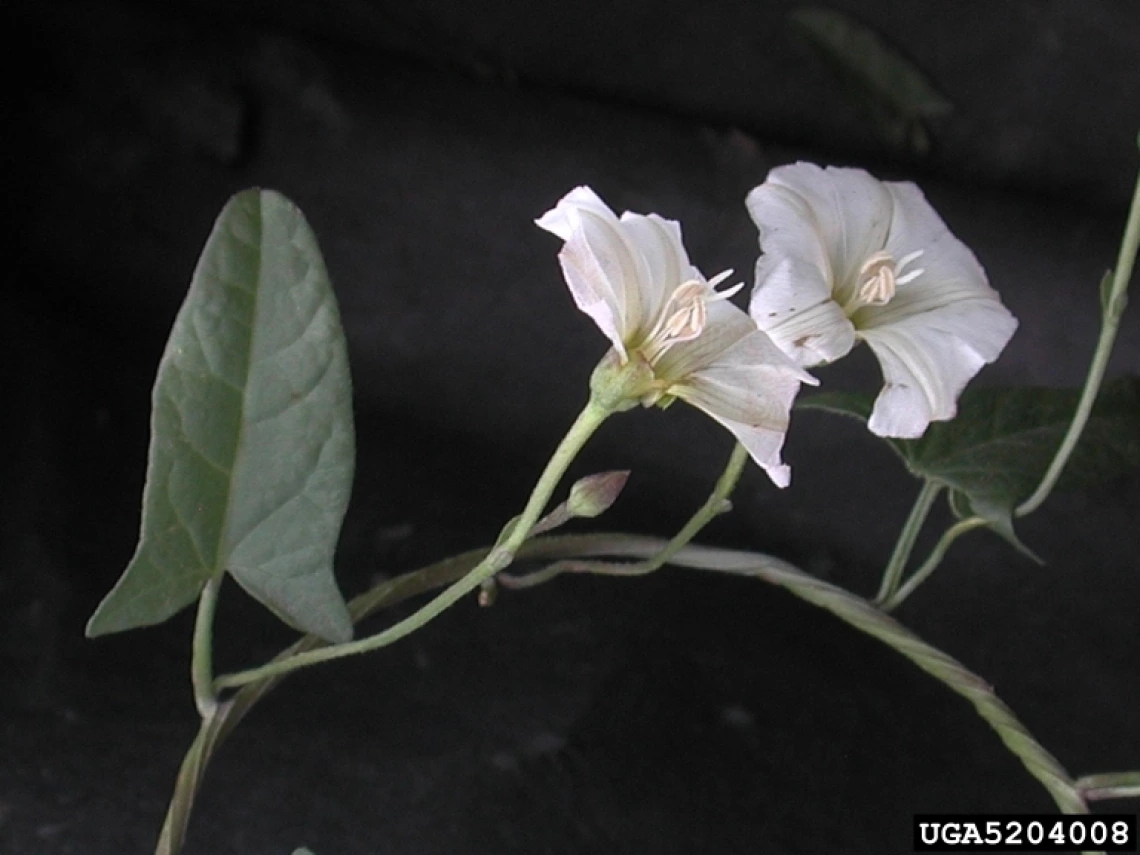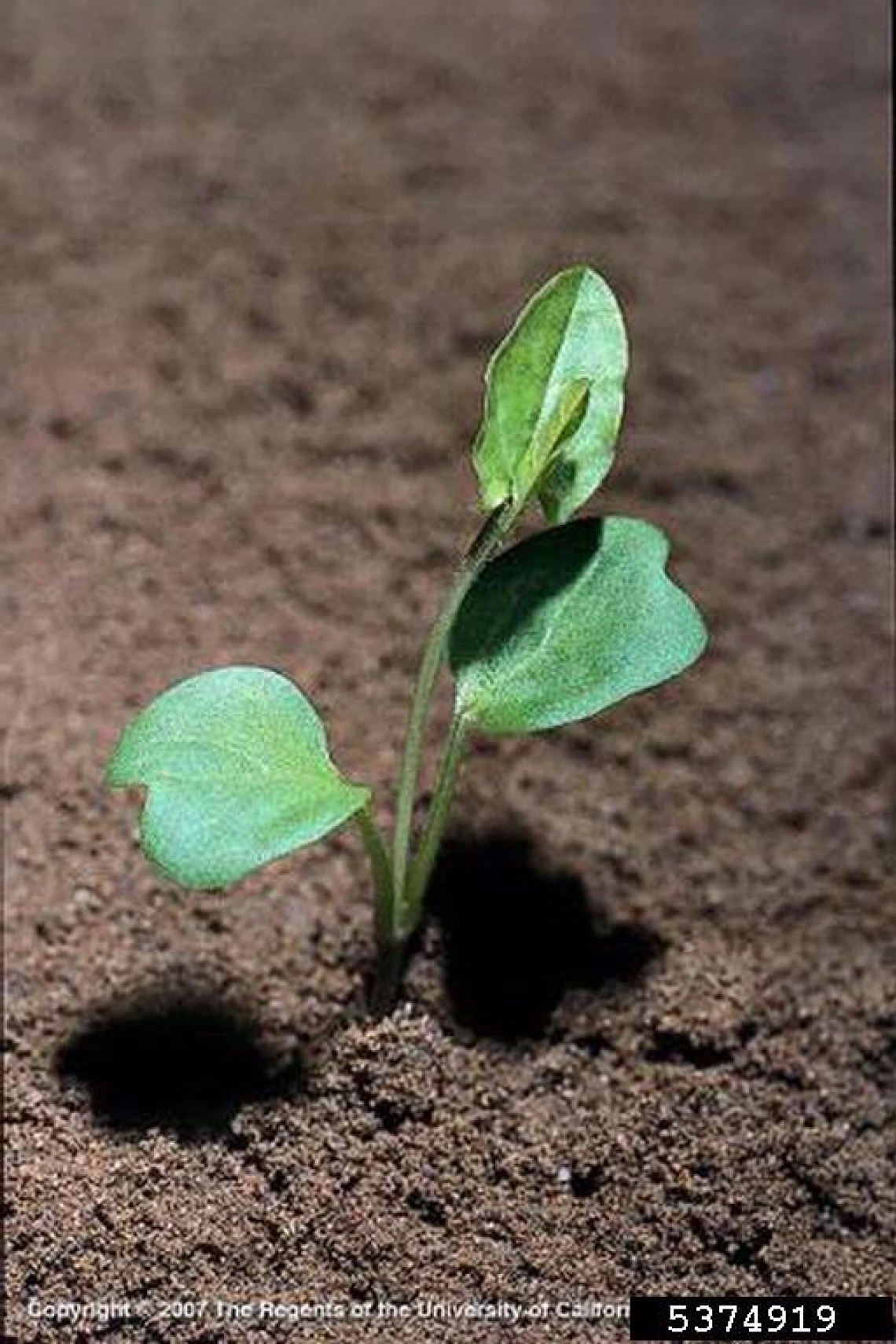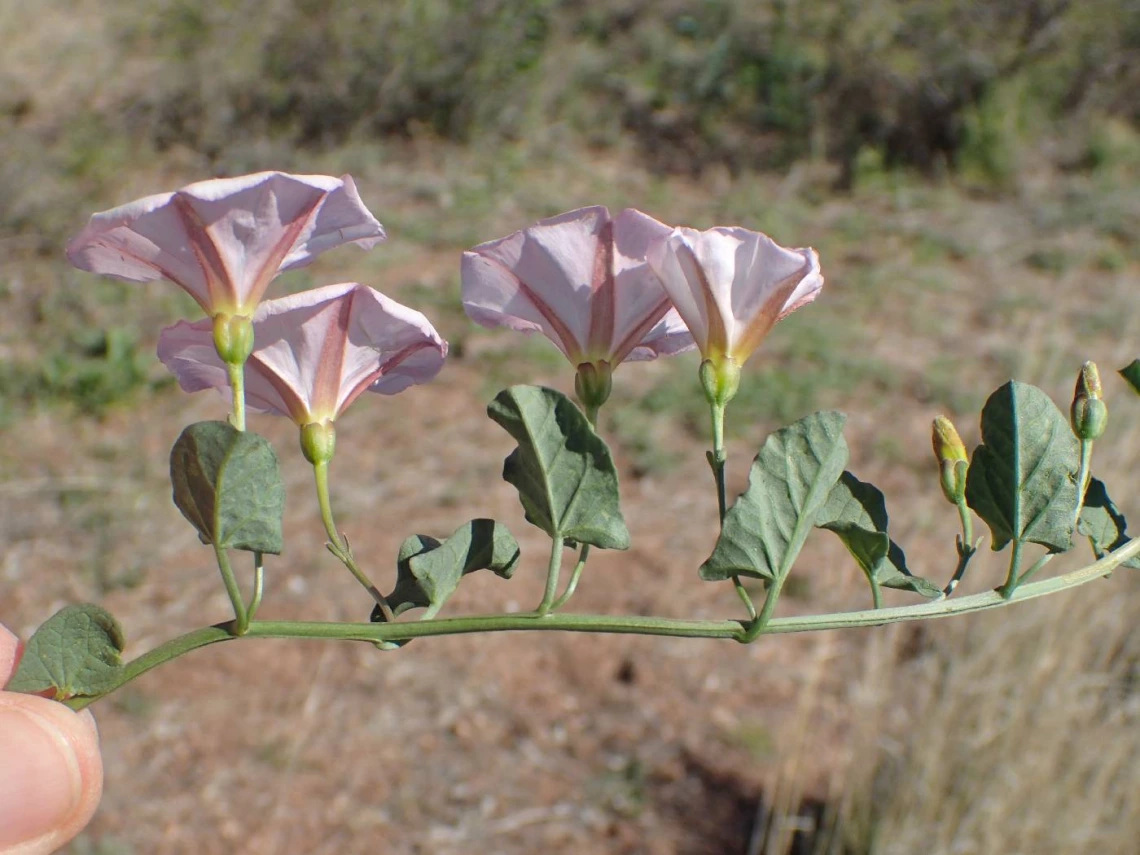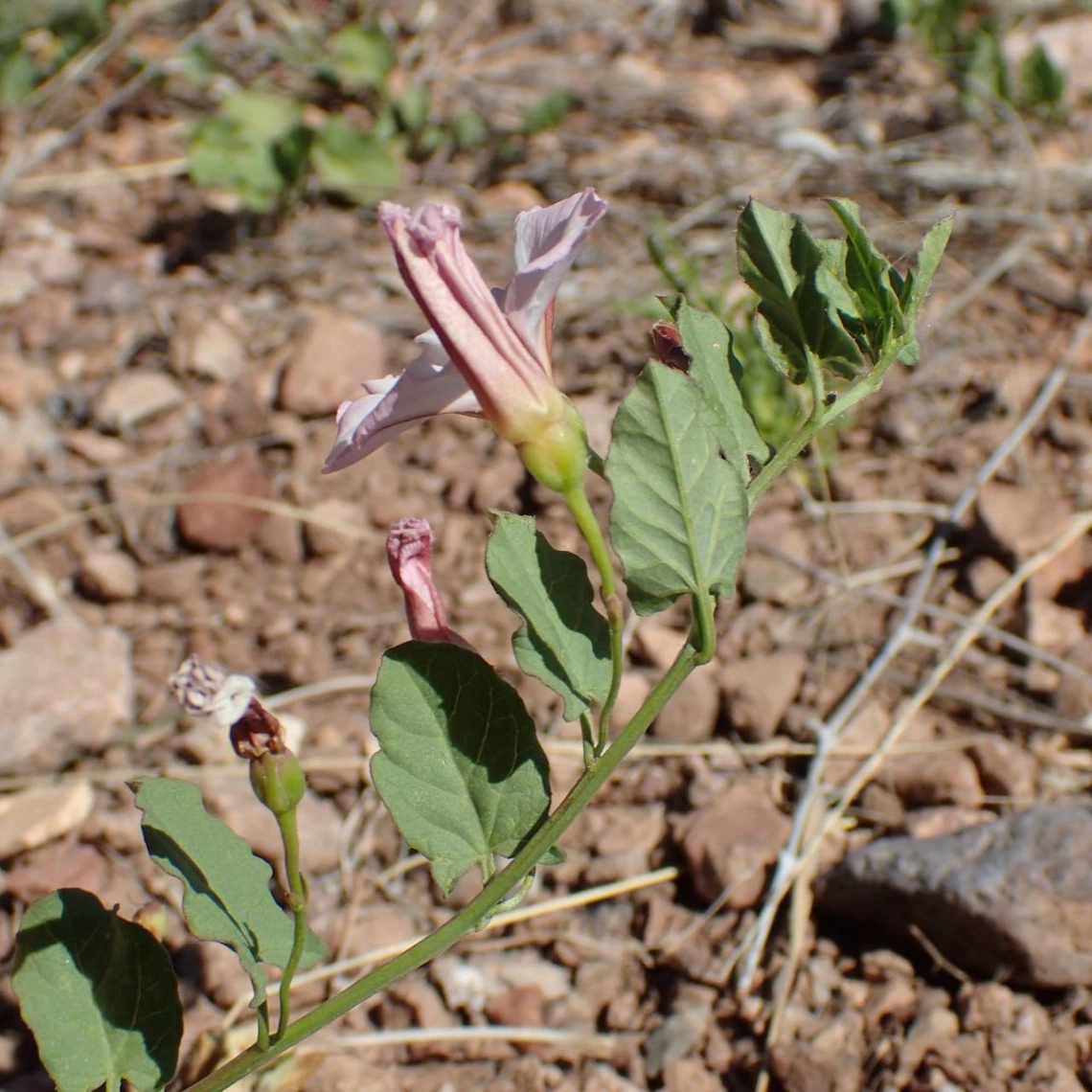Image
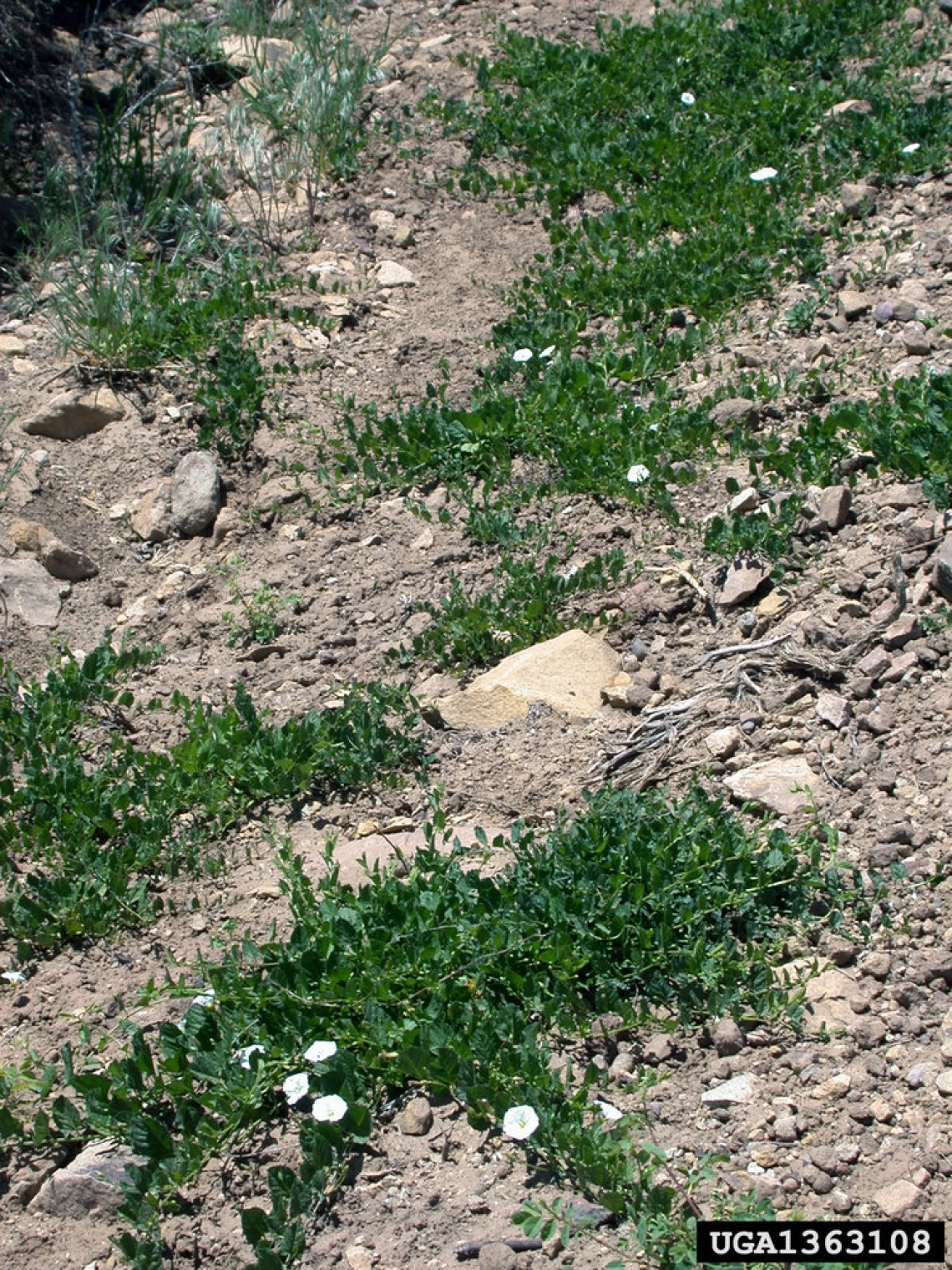
Field bindweed habit
Mary Ellen (Mel) Harte, Bugwood.org
Common Name(s)
Field bindweed
Creeping Jenny
Wild morning glory
Scientific Name
Convolvulus arvensis
Family
Morning Glory family (Convolvulaceae)
Reasons for concern
Due to the extensive root system that runs deep and wide in the soil, this plant is one of the most tenacious weeds in fields, landscapes, and gardens. It is also able to reproduce from rhizomes or underground stems. It grows close to the soil, inhibiting growth of desirable native plants, and reducing biodiversity so important pollinators and wildlife. Control can be very costly to landowners, especially farmers.
Classification
Non-native. Included on the Arizona Noxious Weed List as a Class C noxious weed, which means it is widespread and “may be recommended for active control based on risk assessment.”
Botanical description
A vining, prostrate, broadleaf herbaceous plant.
Leaves
Arrowhead-shaped, alternate, up to 2 inches long, with lobes that point outward. Leaf almost as wide as long.
Stem(s)
Twisted, trailing stems may grow up to 6 feet long, forming dense mats or climbing other vegetation.
Flowers
Single trumpet-shaped flower 1 to 1 ½ inches wide, white to purplish white to pink. Blooms from April through October or until the first frost. They close each afternoon and open the following day.
Roots
Deep taproot extending down as far as 16 feet or more, with numerous long spreading roots.
Native to
Europe
Where it grows
Has adapted to a variety of environmental conditions and elevations. Common in dry waste areas, roadsides, and fields. Prefers full sun. Elevation 100 to 8,500 feet.
Lifecycle
Perennial
Reproduction
By seeds and rhizomes
Weedy Characteristics
Forms dense mats that prevent germination of native seeds. Shades out the sun’s rays, and smothers any seedlings. Seeds are viable up to 50 years.
Look-alike Plants
Other native morning glory species, such as Fort Huachuca morning glory (Ipomoea plummerae), have flowers similar to field bindweed. These native species can also become invasive and some are on the Arizona Noxious Weed List because they pose a major problem to agriculture. Black bindweed (Polygonum convolvulus) is a non-native vine with leaves similar to field bindweed with much smaller flowers.
Control Strategies
Try a heavy mulch. It is difficult to eradicate because of its taproot. One strategy is to prune the vines back to the ground repeatedly, whenever they appear. Take a pair of scissors or shears and snip the bindweed vine off below ground level. Watch the location carefully and cut the vine back again when it re-appears. At the same time, work to improve the soil and add native plants that spread densely to force the bindweed out. If you have bindweed in your lawn, dethatch the lawn and apply fertilizer to help your lawn grow more densely making it far more difficult for bindweed to grow. Plant desirable native species to outcompete invasives.
References
- Weed of the Week: Field bindweed (video) Coconino County Extension
- Field bindweed Noxious Weed Control Board, Washington State
- Field bindweed University of California Agriculture and Natural Resources IPM – Weed Gallery
- Field bindweed University of California Agriculture and Natural Resources IPM – Pests in Gardens and Landscapes

